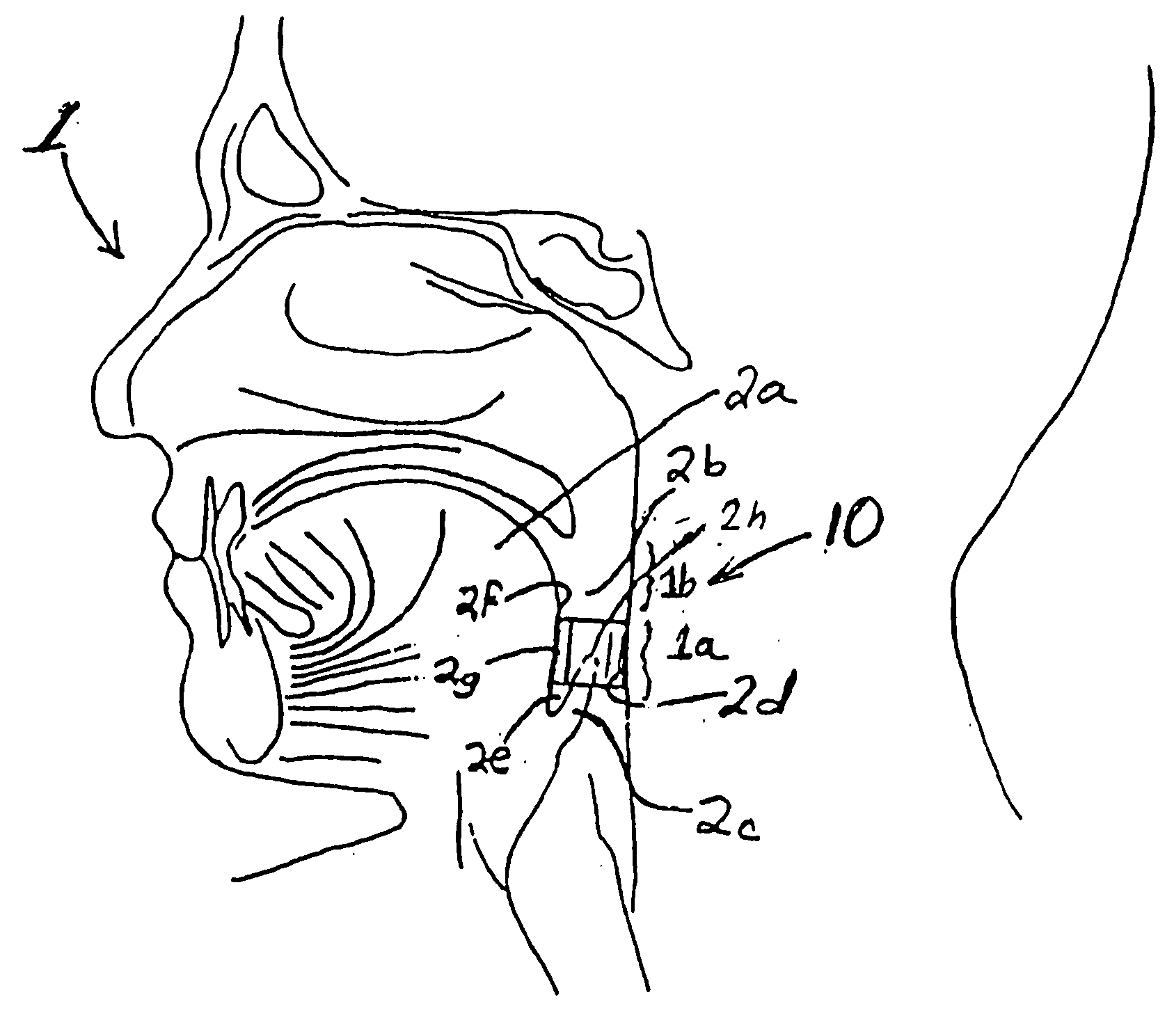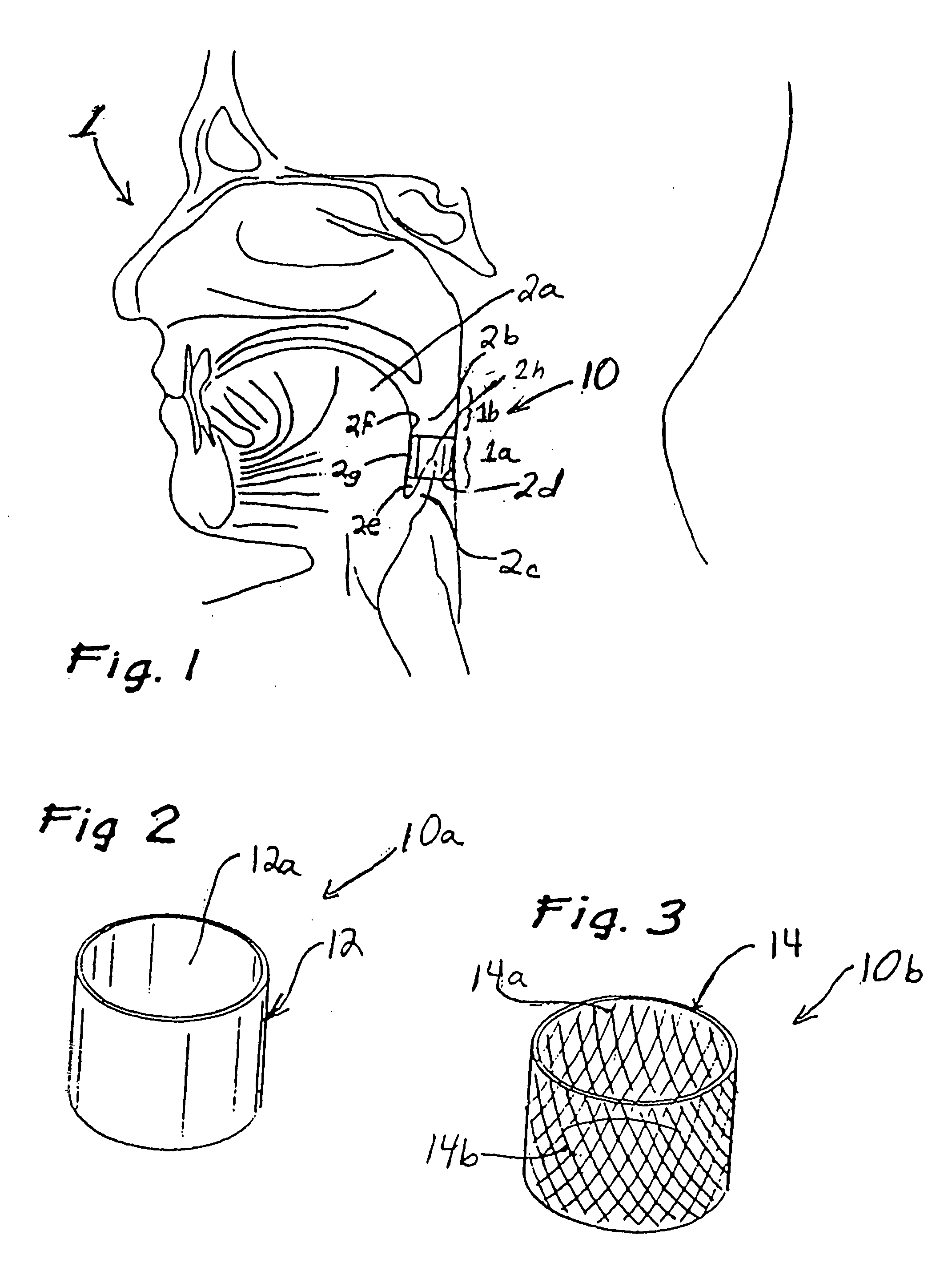Apparatus and methods for treating sleep apnea
a technology for sleep apnea and breathing disorders, applied in the field of apparatus and methods for treating sleep apnea and/or related breathing disorders, can solve the problems of partial or complete obstruction of the airway, increased risk of hypertension, cardiac arrhythmias, stroke, etc., and achieves minimal invasiveness, simple structure and use, and reduced occurrence.
- Summary
- Abstract
- Description
- Claims
- Application Information
AI Technical Summary
Benefits of technology
Problems solved by technology
Method used
Image
Examples
example 1
[0214] A 40-year-old, 5-foot, 11 in., 350 lb male is referred by his primary care physician for evaluation of sleep disturbance. He experiences snoring with apneic pauses, and severe daytime hypersomnolence with narcolepsy, and has so for many years. His occupation as a truck driver has been jeopardized by this behavior. Several years prior, he underwent uvulopalatoplasty (UPPP) and tonsillectomy, without any significant relief of his symptoms. The patient claims that the use of CPAP was attempted, but was unsuccessful.
[0215] A polysomnography is performed indicating a Respiratory Disturbance Index (RDI) of 113.4 with severe desaturations, bradycardia, and complete absence of stage 3, stage 4, and REM sleep. CPAP therapy was titrated to 18, cm of water, but the patient's RDI remained elevated at 60 with ongoing, severe desaturations.
[0216] Appliance 1400 having a length of about 70 mm and a width of about 1.0 mm and a thickness of about 0.0075 inches (about 0.2 mm), is selected by...
example 2
[0222] A 50 year old, 5 foot 4, 180 pound, female patient complains of severe hypersomnolence. It is additionally noted that the patient's spouse has long complained of the patient's substantial nightly snoring and has witnessed pauses in the patient's breathing followed by gasping for air when she sleeps (believed to be apneic pauses).
[0223] Following clinical tests and evaluation of patient history, the patient is diagnosed with severe sleep apnea.
[0224] An appliance 1400 is selected for implantation in the patient. In this example, the appliance 1400 is made of Nitinol and has a length of about 40 mm, a width of 1.25 mm and a thickness of about 0.5 mm.
[0225] Under general anesthesia, and using direct laryngoscopy techniques, the appliance is introduced into the submucosal tissues beginning in the right lateral oropharyngeal region. The appliance is then guided medially, and inferiorly, traveling around the posterior oropharyngeal region and ultimately into the submucosal tissu...
PUM
 Login to View More
Login to View More Abstract
Description
Claims
Application Information
 Login to View More
Login to View More - R&D
- Intellectual Property
- Life Sciences
- Materials
- Tech Scout
- Unparalleled Data Quality
- Higher Quality Content
- 60% Fewer Hallucinations
Browse by: Latest US Patents, China's latest patents, Technical Efficacy Thesaurus, Application Domain, Technology Topic, Popular Technical Reports.
© 2025 PatSnap. All rights reserved.Legal|Privacy policy|Modern Slavery Act Transparency Statement|Sitemap|About US| Contact US: help@patsnap.com



